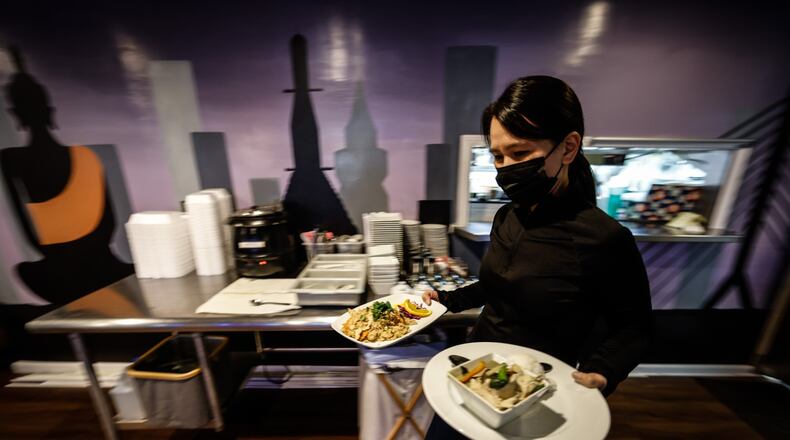Diners still haven’t returned to eating out at pre-pandemic levels, said Suwapat “Sue” Whitted, owner of Thai Kitchen in Miami Twp. and Thai Table in Washington Twp. in Montgomery County.
Subsequent orders decreased seating capacity and otherwise restricted restaurants’ ability to do business. It was an extremely difficult time for restaurants to make ends meet, and many Ohio favorites closed.
Statewide, more than 3,000 restaurants, or about 10%, closed during the pandemic, according to the Ohio Restaurant Association. That is a much higher rate of closures than the state saw pre-pandemic, said Association President John Baker. According to the National Restaurant Association, the industry lost billions of dollars in sales in 2020 and 2021.
Today, many local eateries that survived are still climbing out of the hole, besieged by lingering fallout from a pandemic that permanently changed the industry in many ways.
Many restaurants have raised their prices to keep up with increased costs. Whited and other restauranteurs echoed that finding affordable supplies is a huge problem. Baker with the Ohio Restaurant Association said higher prices and supply chain issues are likely to stick around for a while, at least while the invasion of Ukraine continues to disrupt the global economy. He said the rising price of gas may even exacerbate the situation.
Fortunately, staffing issues appear to be lessening as more people come back to work, said Baker. Kelly Byrd, the general manager of Spaghetti Warehouse in Dayton and a manager of the recently reopened Corner Kitchen, said finding employees was a major problem, but it’s slowly starting to get better.
“It’s still very difficult to find good back-of-the-house team members,” he said.
For better or worse, the pandemic has forever changed the industry. Byrd said eateries have had to shift focus to more carry-out and delivery; streamline menus so they can specialize and keep smaller kitchen staffs; and focus on building up bar business since drinks provide better profit margins than food.
Still, Ohio restaurant managers are optimistic that diners will come back in greater numbers now that the pandemic is winding down and it’s safer to go out.
“People just seem like now they feel safer than before, so I think dining’s going to come back and things will be all right,” said Alex Saki, owner of Pasha Grill, a Turkish restaurant located at The Greene Town Center. “COVID is hopefully over so we are back to business.”
About the Author

